Posty
When it is appropriate to do so, co-packaged goods should also be labeled to indicate the procedures for maintenance that should be followed. This should only be done if doing so die cast parts will not compromise the safety of the product. The price of the item, in addition to information regarding the inclusion or exclusion of taxes and delivery:These mold parts have to be the genuine article, not a copy, and they have to have a value-added space that is comparable to what is currently available on the market. The capability of replacing specific components individuallyThe design of the component that was supplied by the vendor will eventually be upgraded after a predetermined amount of time, at which point you will be able to replace the version that had been in use up until that point in time. If you are considering making a purchase of precision mold parts, it is imperative that you keep all of these things in mind.
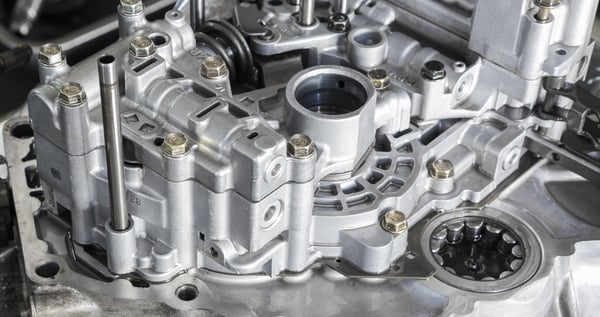
Let's get together and educate ourselves on the many different processes that can be carried out in order to heat treat molds that are both precise and complex, shall we? Let's do that, shall we?Because the molds that are processed by heat treatment include a varied collection of molds that require a high level of precision and intricacy, the processor needs to have access to the method that is the most suitable. For highly abrasive steel that has severe carbide segregation, the most effective method of heat treatment is one that combines forging, quenching, and tempering into a single cycle. Reasonableness and symmetry, two qualities that should characterize the mold, should be exhibited in its design, and these are two qualities that should be exhibited in its design. In addition to this, it is essential that you check to see that your mold has adequate space in it. One is able to reduce the amount that the mold is warped as a direct result of the heat treatment by utilizing strategies such as careful temperature selection and regulation, gradual heating, preliminary heating, and various other methods of balanced heating. These strategies can be used to help reduce the amount that the mold is warped.
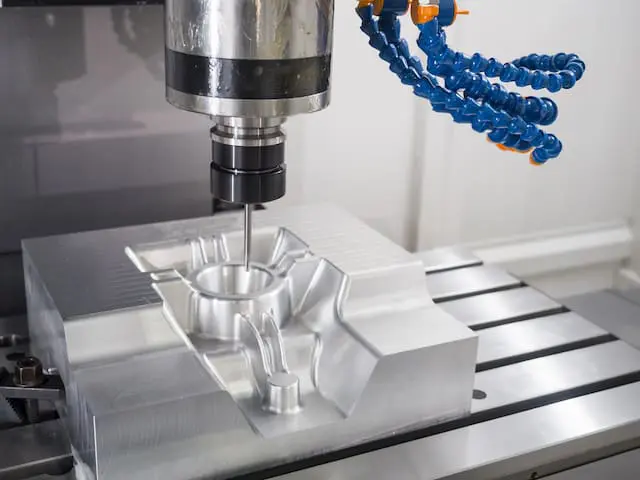
In addition, I am confident that everyone is aware that precision mold accessories are the accessories that are used for molds that have such a high degree of precision. This is because precision mold accessories are the accessories that are used for molds that have a high degree of accuracy. When it comes to the processing of precision molds, it is an instrument that is absolutely necessary to have, and it also has the potential to play a significant role as an important instrument for complementarity and mutual assistance in the workplace. Accessories for molds that are made with high levels of precision and quality can perform a variety of functions, including guiding the mold through the process. One of these functions is guiding the mold through the process. The mold can be effectively modified and compensated during the processing phase by making use of a variety of accessories, and these accessories can be changed by making use of a variety of accessories. In addition, the mold itself can be effectively modified and compensated by making use of a variety of accessories. Do you have any idea as to what the optimal working conditions for precision mold parts would be?Superb performance, even when subjected to extremely high temperaturesWhen the mold's working temperature is high, the mold's hardness and strength will decrease, which will lead to premature wear or plastic deformation of the mold, which will ultimately lead to the mold breaking. This can be avoided by keeping the mold at a temperature that is lower than its working temperature. Keeping the temperature at which the mold is working at a lower level can help prevent this from happening. Because of this, the components of precision molds need to have a high resistance to tempering in order to ensure that the casting services mold maintains a high level of hardness and strength even when it is being used at temperatures that are higher than room temperature. This is necessary in order for the mold to be able to produce parts that have a high level of precision and accuracy.
When it is appropriate to do so, co-packaged goods should also zinc alloy die casting be labeled to indicate the procedures for maintenance that should be followed. This should only be done if doing so will not compromise the safety of the product. The price of the item, in addition to information regarding the inclusion or exclusion of taxes and delivery:These mold parts have to be the genuine article, not a copy, and they have to have a value-added space that is comparable to what is currently available on the market. The capability of replacing specific components individuallyThe design of the component that was supplied by the vendor will eventually be upgraded after a predetermined amount of time, at which point you will be able to replace the version that had been in use up until that point in time. If you are considering making a purchase of precision mold parts, it is imperative that you keep all of these things in mind.
Let's get together and educate ourselves on the many different processes that can be carried out in order to heat treat molds that are both precise and complex, shall we? Let's do that, shall we?Because the molds that are processed by heat treatment include a varied collection of molds that require a high level of precision and intricacy, the processor needs to have access to the method that is the most suitable. For highly abrasive steel that has severe carbide segregation, the most effective method of heat treatment is one that combines forging, quenching, and tempering into a single cycle. Reasonableness and symmetry, two qualities that should characterize the mold, should be exhibited in its design, and these are two qualities that should be exhibited in its design. In addition to this, it is essential that you check to see that your mold has adequate space in it. One is able to reduce the amount that the mold is warped as a direct result of the heat treatment by utilizing strategies such as careful temperature selection and regulation, gradual heating, preliminary heating, and various other methods of balanced heating. These strategies can be used to help reduce the amount that the mold is warped.
In addition, I am confident that everyone is aware that precision mold accessories are the accessories that are used for molds that have such a high degree of precision. This is because precision mold accessories are the accessories that are used for molds that have a high degree of accuracy. When it comes to the processing of precision molds, it is an instrument that is absolutely necessary to have, and it also has the potential to play a significant role as an important instrument for complementarity and mutual assistance in the workplace. Accessories for molds that are made with high levels of precision and quality can perform a variety of functions, including guiding the mold through the process. One of these functions is guiding the mold through the process. The mold can be effectively modified and compensated during the processing phase by making use of a variety of accessories, and these accessories can be changed by making use of a variety of accessories. In addition, the mold itself can be effectively modified and compensated by making use of a variety of accessories. Do you have any idea as to what the optimal working conditions for precision mold parts would be?Superb performance, even when subjected to extremely high temperaturesWhen the mold's working temperature is high, the mold's hardness and strength will decrease, which will lead to premature wear or plastic deformation of the mold, which will ultimately lead to the mold breaking. This can be avoided by keeping the mold at a temperature that is lower than its working temperature. Keeping the temperature at which the mold is working at a lower level can help prevent this from happening. Because of this, the components of precision molds need to have a high resistance to tempering in order to ensure that the mold maintains a high level of hardness and strength even when it is being used at temperatures that are higher than room temperature. This is necessary in order for the mold to be able to produce parts that have a high level of precision and accuracy.
This is due to the fact that fatigue fracture occurs when cyclic stress is applied repeatedly over an extended period of time. The strength, toughness, and hardness of the material, in addition to the quantity of inclusions that are present in die casting products the material, are the primary factors that determine how well the mold will perform in terms of fatigue fracture. Other factors include the quantity of inclusions that are present in the material. resilience in the face of the exhaustion that can be caused by prolonged exposure to extremes of temperatureDuring the working process, there will be a period of time during which several of the molds will be in a state in which they will be repeatedly heated and cooled. This causes the surface of the cavity to be subjected to tension, pressure, and stress, which in turn causes surface cracks and peeling, increases friction, impedes plastic deformation, and reduces dimensional accuracy, which ultimately leads to the failure of the mold. Ultimately, this causes the mold to fail.
One of the most common causes of failure in hot work dies is a combination of cold and heat fatigue, which can occur at any temperature. In a nutshell, it is a reference to the criteria that must be met zinc castings by precision mold parts in order for them to be in proper working condition. This ensures that the parts will function as intended. I believe that everyone in the mold industry is aware that the term "mold accessories" refers to the more general category of metal accessories that are used in stamping molds, plastic molds, or FA automation equipment. This is something that everyone in the mold industry is aware of. In addition to being used extensively in the production of a wide variety of plastic molds, stamping molds, automobiles, electrical components, and aerospace components, it is also widely used in other applications. When looking to make a purchase of precision mold accessories, it is important to take into consideration the following aspects: easy installation, instructions on how to maintain the parts, and the presence or absence of instructions that are simple to understand and straightforward to carry out.
Beginning with the design and manufacturing process, it is essential to use the appropriate tools and materials, ensure precise fits, and maintain tight tolerances because quality is more important than cost and lead time. For this reason, CNC machining is an excellent choice for use in the aerospace industry. The use of automated computer numerical control (CNC) machining helps this manufacturing method achieve a high degree of precision while reducing the likelihood of errors caused by human intervention. Additionally, CNC machining is a quick method, particularly when working with a limited number of components.
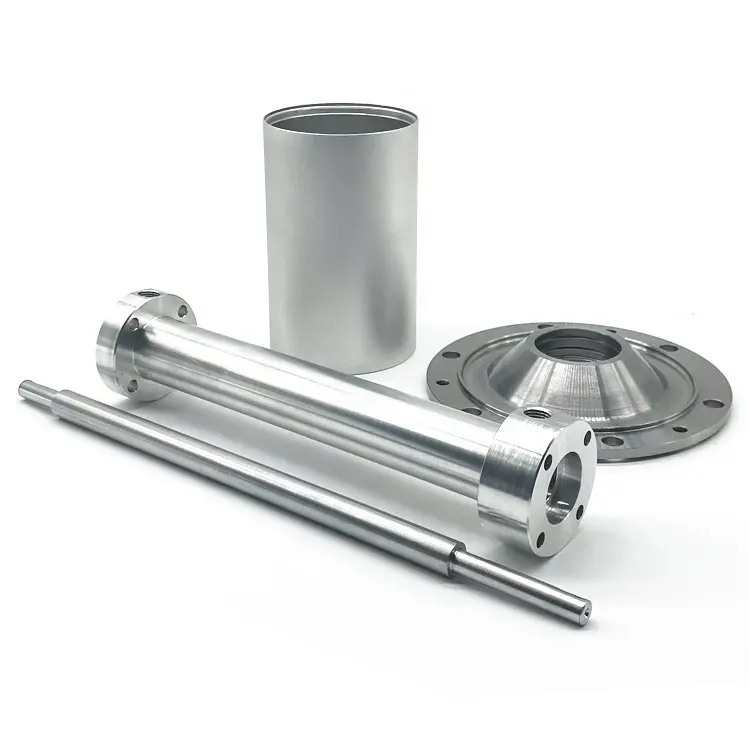
Components for modern aircraft, such as the landing gear (components such as brackets and torque links), the engines (compressors and turbines), and the rest of the aircraft are all manufactured with the help of CNC machining. Components of the structure, such as the fuselage, bulkheads, and other parts of the fuselage, can also be machined with a CNC. Additionally, gears, shafts, and housings that are essential to moving parts are frequently machined with a CNC. Last but not least, piston engine casings are frequently CNC machined, particularly in rotorcraft like helicopters. The extreme environments and use cases experienced by airplanes, helicopters, and spacecraft require specialty materials, which CNC machining works well with. CNC machining also works well with the materials that are required for aerospace components. Titanium, particularly grades 2 and 5, which is used in engine components due to its heat resistance and strength, is one of these materials. Other materials include nickel, steel, and aluminum. Titanium is an extremely expensive material, and as a result, it cannot be utilized in every component of the airplane.
Alloy steels, in particular 4340 and 4130, are also used in the manufacturing of aerospace components. 4340 steel is tough and strong, and it has a high potential hardness; these characteristics make it ideal for the high loads that are experienced by aircraft landing gear. The strength to cost ratio of steel, especially when compared to titanium, is favorable. However, steel is a denser and heavier material, which limits its use in aerospace applications. 4130 steel also has a high tensile strength and is used in gears, fasteners, and external components. Steel, in contrast to titanium, corrodes easily and must therefore be coated if it is going to be exposed to moisture.
Last but not least, because of its low density, aluminum has a high strength-to-weight ratio. In addition to this, aluminum is simple to machine and can do so two to three times as quickly as steel. Aluminum 2024 has good fatigue resistance, which means it can withstand many load cycles. Aluminum 6061 is a precipitation hardening aluminum alloy that has good corrosion resistance and can be found in aircraft wings and fuselages. Aluminum 7075 has a good combination of fatigue resistance and corrosion resistance, which leads to its use in aircraft structural components that are used in a wide variety of applications. Machining components using a CNC machine is not always a straightforward process, regardless of the application, and this holds true for aerospace components as well. The following article will discuss three distinct challenges that frequently arise during the manufacturing of aerospace components, as well as potential answers to those challenges.
1. The processing of large parts with thin walls
The housings of certain components, like those found in engines and compressors, have large cavities on the inside.For instance, a CNC machine needs to cut away a significant portion of the material before it can create the transmission housing for a helicopter blade.It takes a significant amount of time, results in a significant amount of scrap, and causes residual stresses in the part, which can cause distortion or warping. This is problematic when working with tight tolerances and high standards.
If both of these tests are passed, then you can continue prototyping and testing the part. The IRMR should be greater than 85%, which indicates that you have removed less than 15% of the internal part volume. The ERMR, which compares the final part bounding box volume to the stock volume, should be greater than 30%. If both of these tests Custom Sheet Metal Fabrication are passed, then you can continue. However, if either of these values is outside of the acceptable range, the manufacturing of your component may be difficult while still adhering to the tolerances, or you may find that it does not perform as expected.
If only a few components are needed, you may be able to machine one, put it through its paces, and move on to the next if the results of the first test are satisfactory. Casting these types of parts is not always possible, but when it is, it is a method that is better suited to the production of large thin-walled parts. Casting allows for less material waste and a reduction in warpage, but CNC machining may still be required for finishing and maintaining tolerances.
You can finally use specialized high-performance 5-axis CNC machines that give you greater control over force, power, and speed. These machines allow you to machine thin-walled parts without having to apply an excessive amount of force because you can use lower forces, power, and speed. It can be deformed by high forces. Additionally, you can machine parts symmetrically with ADOC or RDOC, which helps distribute forces and, as a result, reduces the amount of residual stress.
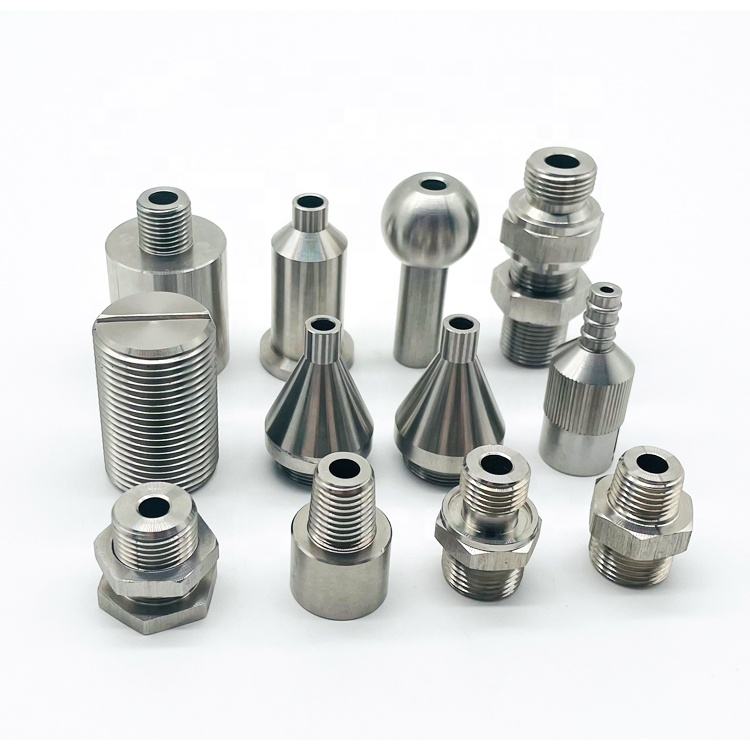
2. Be able to manage complicated geometries
As a result of the one-of-a-kind demands placed on aerospace components, the geometries of these parts are frequently quite complicated in order to minimize weight while maximizing strength or to facilitate airflow over the surface of the part.
On the other hand, these complicated geometries can frequently be overly complicated. Such as the case when the interior components are designed with intricate organic surface geometries. It is in everyone's best interest to keep the component design as straightforward as is humanly possible given that increased complexity results in longer machining times and, potentially, longer searches for capable suppliers.
It may not be necessary to do anything more than facilitate design for manufacturability (DFM) between engineers and designers in order to alleviate the current situation. DFM takes into account the constraints of manufacturing and takes into account the practicability of the design in terms of time and cost from the point of view of the processing. This can help engineers consider the circumstances in which complexity is truly required and those in which it is of less significance. For instance, internal components are not essential to the flow of air and therefore do not require elaborately curved surfaces.
3. Part size: CNC limit
The last obstacle to overcome in part geometry is the part size.Aircraft are enormous assemblies that are composed of millions of parts, the majority of which are quite small. Because of this, aircraft require some particularly large assemblies.Because the bed of a typical machine tool is only a few feet long, it is not sufficient for manufacturing structural components or other large parts. As a result, finding a supplier that has the capability to manufacture these items can be difficult.
In order to resolve this issue, you will need to locate a new supplier that possesses a sizable CNC machine that is capable of dealing with the part size. In the event that this is not the case, you will be required to redesign the parts in order for them to fit, which may involve breaking larger components down into smaller pieces. On the other hand, this may result in an increase in the total weight because the assembly of multiple smaller sections requires an increased number of fasteners.
Altering the procedure of production is yet another approach that could be taken. Casting allows for the production of larger parts in a single piece; however, post-processing may still necessitate CNC machining. Because of this, it is not a particularly cost-effective swiss machining services choice for CNC machining of parts produced in small batches.
CNC milling machines are categorized according to the number of axes that they operate on. The movements that these axes are capable of affect not only the part features that can be manufactured but also the level of productivity and accuracy that can be achieved. In a general sense, the more degrees of freedom that are available, the greater the potential for producing intricate geometries. Milling machines with three, four, and five axes of movement are the most common types. What is the difference between a 3-axis, 4-axis, and 5-axis machine when it comes to CNC machining?What are the benefits that come with using each of them?Which types of products are they able to successfully process?.
The term "CNC machining" most commonly refers to three axes that move linearly in different directions, such as up and down, front and back, and left and right respectively. Milling cutters with three axes are typically used for drilling and tapping, but only along the Z axis. This makes them better suited for the machining of disc-type parts, but it is a limitation for many parts that need to machine grooves or holes on multiple faces.
There are four axes: the x-axis, the y-axis, the z-axis, and the a-axis, which allows for rotation around the x-axis. 4-axis CNC machining is when a fourth axis is added to the movement of the cutting tool to allow for this rotation around the x-axis. The workpiece can also rotate on what is called the cnc machining parts b-axis, which is supported by the majority of 4-axis CNC machines. This enables the machine to perform the functions of both a mill and a lathe. If you need to drill holes on the side of a part or on the curved surface of a cylinder, the best option is 4-axis CNC machining, which has high machining accuracy and significantly speeds up the process of machining while maintaining a high level of speed.
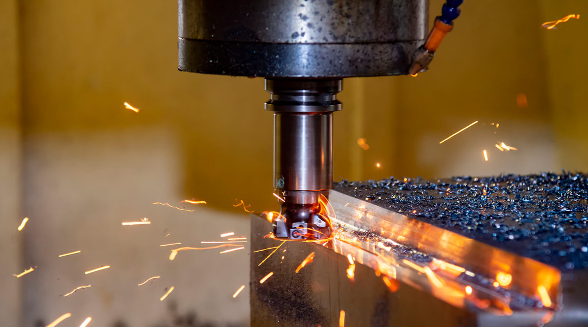
The 4-axis CNC machining technique is expanded to include a fifth rotation axis, known as the 5-axis. In most cases, the vertical surface will be rotated through a full 360 degrees. The 5-axis can already be fully processed, and it is possible to realize one-time clamping, which can reduce the cost of clamping as well as the risk of product scratches and bruises. 5-axis CNC machining is utilized for the production of a wide variety of complex precision parts. These parts include medical components of artificial prostheses or bones, aerospace components, titanium components, oil and gas mechanical components, military products, and so on.
Although 5-axis processing has many advantages over 3-axis and 4-axis processing, not all products are suitable for 5-axis processing, and even products that are suitable for 3-axis processing might not be suitable for 5-axis processing in some cases. If the shaft is processed, not only will this lead to an increase in cost, but there is no guarantee that the result will be positive. Every sector has its own unique set of manufacturing requirements, and there are a wide variety of processes from which to select when developing individualized components for products. We have worked with clients from a wide variety of industries and integrated key observations to assist you in making the best decision for the next project regarding the process to use.
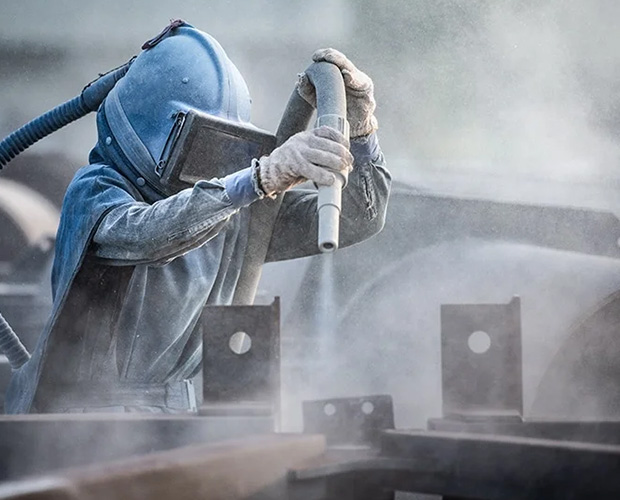
Because of CNC's high precision, range of qualified material options, and variety of finishing choices, the majority of engineers and product designers working in the aerospace industry use this manufacturing method to machine their custom parts. Because they can engineer to precise tolerances in metals such as aluminum, steel, and titanium, aerospace companies make extensive use of the machining process. Fused Deposition Modeling (FDM) and Selective Laser Sintering (SLS) are common choices for workpieces that do not utilize sheet metal machining or fabrication because of their complexity and scalability at a lower cost.
Medical Equipment
Direct metal laser sintering, also known as DMLS, is the method that is used by the vast majority of engineers and product designers in this sector.The use of direct metal laser sintering (DMLS) in metal 3D printing allows for complex geometries to be created at a fraction of the cost of conventional machining.SLS 3D printing is becoming increasingly popular as an option for producing prototypes and non-metallic parts.Although high precision and the use of specialized materials are the primary concerns, CNC machining is still often an essential component of the manufacturing process for medical devices.
Consumer Culture and Emerging Technologies
There are a variety of processes that can be used to manufacture technical industry parts; however, FDM manufacturing may be the most appropriate for these parts.FDM is distinguished by its greater capacity, greater strength, and greater variety of material options.Finer models for rapid prototyping are well suited for photopolymers such as PolyJet rigid and rubber-like materials, including the option to build multi-material demo CNC Turning Services pieces. These materials can also be used to create finer models for rapid prototyping.The industry frequently turns to polyurethane casting for more cosmetic and end-consumer products because it allows them to achieve the surface finish, performance, and color requirements that wow their respective markets.Castings made of polyurethane are frequently used as a stepping stone on the path to high-volume manufacturing processes like molding..
When designing custom automotive parts, it is important to have a variety of materials to choose from, as well as a variety of custom finish options. Car CNC machining is the manufacturing method of choice for engineers working in the automotive industry.
Large-scale FDM manufacturing is being used by automotive production engineers in the factory to specifically manufacture assembly jigs and fixtures that can be up to three feet in length.
When it comes to selecting a method for production, various strategies and procedures are utilized across all sectors of the economy. There is still room for flexibility within each category, and this depends on the level of precision that is required while also taking into account cost considerations. Qile Industrial has the right solution for quick online quoting, lead times, and manufacturing feedback, whether you online machining services need it for subtractive or additive parts, from the prototype stage all the way through production runs.
The use of lasers in the field of modern industrial processing is becoming more and more common, and laser Investment Casting etching is one of the applications of lasers that is becoming increasingly common; it is currently the fastest marking process. The process of laser etching anodized aluminum is one of the most common applications for laser engravers worldwide. It is popular not only because of its exceptional durability and aesthetics, but also because the signs that are produced by high-quality laser engravers are bright and have a high contrast.
What exactly is laser etching, though?
What exactly is laser etching, though?.
The process of laser etching involves firing a significant amount of energy for a predetermined amount of time in order to leave marks on a surface using a laser beam. Engraving and cutting are just two of 5 axis machining the many possible applications for this versatile material. After metal contact, the process of laser etching causes the surface of the metal to melt due to the intense heat generated by the laser beam. The expansion of the molten material after it has been melted leaves marks on the surface of the material.
Graphic design software is used to create the patterns that are etched into glass using a laser. This software for graphic design is compatible with vector files. When the design is finished, it is turned into a vector file, and then it is sent to a laser etcher to be printed. CNC routers are required for laser etchers in order to read out vector files. In addition to this, it creates the design that was envisioned as well as the pattern of laser movement.
The surface layer of the aluminum is converted to aluminum oxide through the process of anodizing the metal. This is the primary goal of the process. This material protects the pure aluminum that lies underneath it from oxidation and wear better than the other options available. Some methods of anodizing produce porous layers of aluminum oxide on the surface of the metal, and these layers can be colored using special dyes despite the fact that aluminum oxide is practically transparent. As a result, anodized aluminum is more durable than regular aluminum and does not corrode, scratch, or break like regular aluminum does. It also comes in a variety of colors, which is just one of its many benefits.

The anodizing procedure only has an effect on the surface of the aluminum between 0. 1 and 1. 0 millimeters deep. Because of this, the laser etching process is the one that should be used to mark anodized aluminum because it has an impact depth of only 0. 25 mm. Laser engraving, on the other hand, has an impact depth of three millimeters. This means that the laser reveals the less hardy aluminum that lies beneath the anodic layer, which in turn makes the item more susceptible to damage.
For the purpose of marking postage stamps, monograms, and barcodes, the technology of laser etching and engraving is utilized in a wide variety of different industries. There are some key distinctions between their methods, despite the similarities. The depth of cut is what differentiates the engraving process from the laser etching process as the primary distinction. Laser engraving is a deep cut that goes all the way through the aluminum material, whereas laser etching is a shallow cut that only goes halfway through the material. Because it does not strip away the anodized layer, laser etching is frequently utilized when working with anodized aluminum. This program can be utilized for displaying serial numbers, barcodes, and other drawings that do not require a significant amount of depth.
The use of laser engraving and laser etching allows for the creation of permanent marks of a high quality on a wide variety of different materials. Laser engraving, on the other hand, is typically better suited for marking hard, flat surfaces, whereas laser etching is typically better suited for marking softer materials and curved surfaces. When compared to laser etching, laser engraving can produce marks that last significantly longer, and systems that utilize laser engraving are frequently effective when applied to components that are subjected to high levels of wear. Because it is a quicker and more effective method, laser etching is well-suited for use in production environments with higher volume requirements. Engraving with a laser, on the other hand, takes significantly more time and is, as a result, more suited to production in small batches.
Marks made by laser etching can be permanent, and many of the other methods of marking parts can be used on a diverse range of materials. This versatility makes the marking process a good option for use in a variety of different industries. As a result of the high demand for them, they find applications in many different kinds of businesses, such as those dealing with aerospace, medicine, automobiles, the armed forces, defense, electronics, industry, and tools. Etching with a laser is utilized in manufacturing because it not only leaves marks that are enduring but also physically removes material from metals at a high rate of speed. Barcodes, text logos, serial numbers, and even 2D data can be marked with this device.
Crafts involving copper casting can now be reproduced to perfection using 3D printing technology.
The capability of 3D scanning and printing, which can be used to preserve and salvage artworks of historical value, is without a doubt one of the most useful capabilities. This technology can be used to carbon steel CNC machining preserve and salvage artworks of historical value. When highly developed, contemporary technologies come into contact with time-honored craftsmanship, what kind of sparks will be produced?.
It is one of the most advanced 3D replication projects that has ever been attempted, according to the specialists who work for the team, who claim that they can create a perfect replica of this valuable piece of artwork almost from the other side of the world. They explain that although sculptors have been using the same rigid metal casting techniques for centuries, the combination of 3D scanning and printing offers a more seamless and sustainable way to reproduce these priceless works of art. This is because it reduces the amount of material that is wasted during the reproduction process.
Mussi continued to explain the lost-wax technique, which is a metalworking method he learned about four decades ago from Italian metalworkers. Now, he integrates the 3D scanning and printing technologies into his workflow. He considers it to be one of the most significant advances that has taken place in recent times. Despite the fact that Mussi used his traditional craftsmanship in the production, he believes that 3D printing has a better ability to reproduce these details. This belief is the primary reason for Mussi's strong support for the technology of 3D printing. We have a highly accurate reproduction, but no artist has attempted to recreate it as of yet. Mussi stated that at this time, only our recently developed technology is capable of doing it.
Scansite is in charge of gathering the scan data of the original casting, which is subsequently converted into a point cloud and a 3D model. After finishing the final files, they sent them to Fathom, who created the models with the help of a 3D printer after receiving the files. When the models were finished being 3D printed, they were given to Musi and Artworks Foundry so that they could be used in the production of candle molds. The candle molds were eventually put to use in the process of lost-wax casting, which is a technique that has been around for thousands of years and has not changed. This technique was used to recreate bronze castings. The key difference is that they now use a brand new method in conjunction with cutting-edge technology for 3D scanning and printing.









